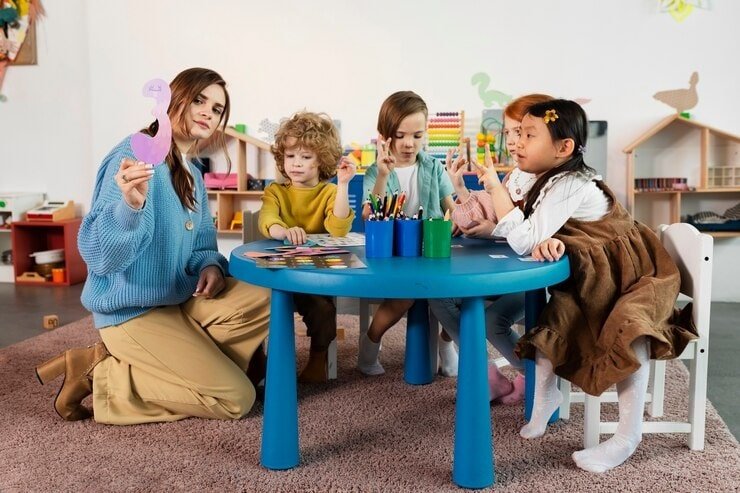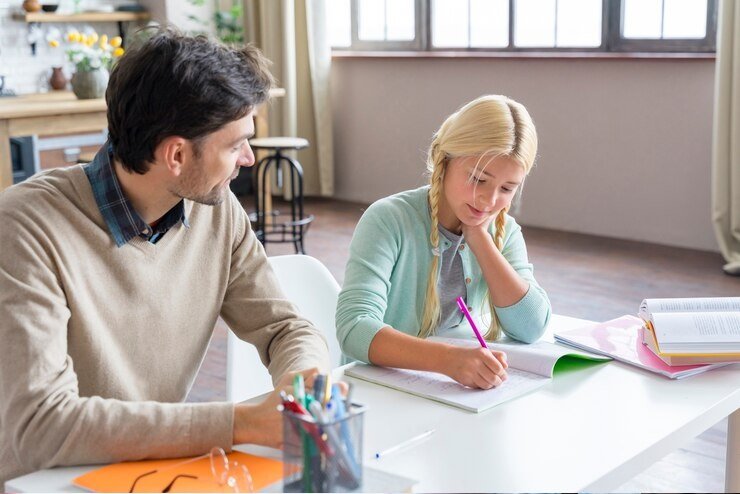
Can you recall a time when you were so engaged in learning that the hours seemed to fly by? That’s the power of a positive learning environment – it can transform the dullest subjects into captivating experiences, igniting a lifelong love for knowledge. In this article, we’ll dive deep into the art of creating a positive learning environment, empowering you to unlock the full potential of your students.
A positive learning environment fosters engagement, motivation, and academic success by nurturing a sense of belonging, respect, and intellectual curiosity.
Key Takeaways:
- A positive learning environment is crucial for student engagement, motivation, and academic performance.
- Characteristics of a positive learning environment include being welcoming, personalized, engaging, and building trust and respect.
- Creating a positive physical environment, fostering positive relationships, and implementing effective teaching strategies can contribute to a positive learning environment.
- Positive classroom management techniques, such as clear rules, positive reinforcement, and addressing misbehavior, are essential for maintaining a positive learning environment.
Characteristics of a Positive Learning Environment
- Be Welcoming: A warm and inviting atmosphere sets the tone for a positive learning environment. Greet your students with a smile, and make them feel valued and appreciated from the moment they step into the classroom.
- Ask the Students: Involve your students in the decision-making process. Seek their input on classroom rules, activities, and even seating arrangements. When students feel heard, they’re more likely to engage and take ownership of their learning.
- Personalize: Each student is unique, with their own strengths, weaknesses, and learning styles. Tailor your teaching methods to accommodate diverse needs, and celebrate individual achievements and progress.
- Follow Routines: Establishing consistent routines and procedures can create a sense of structure and predictability, which helps students feel secure and focused.
- Engage: Incorporate interactive activities, discussions, and hands-on learning experiences to keep students engaged and interested. A positive learning environment thrives on active participation and intellectual stimulation.
- Be Flexible: While routines are important, flexibility is also key. Be prepared to adapt to unexpected situations, and be open to trying new approaches when needed.
- Build Trust and Respect: Foster an environment of mutual trust and respect between you and your students, as well as among the students themselves. Encourage open communication, active listening, and respectful disagreement.
Creating a Positive Physical Environment
- Add a Splash of Color: Liven up your classroom with vibrant posters, student artwork, and inspirational quotes. A visually appealing space can boost mood and creativity.
- Organize the Classroom for Optimal Learning: Arrange desks and seating to promote collaboration and minimize distractions. Ensure that all students have a clear view of the board or projector screen.
- Incorporate Student Work and Achievements: Display student projects, artwork, and accomplishments prominently. This not only celebrates their efforts but also encourages a sense of pride and ownership in the learning space.
- Use Technology to Enhance the Learning Environment: Incorporate interactive whiteboards, educational apps, and multimedia resources to engage students and cater to different learning styles.
Fostering Positive Relationships
- Build Positive Relationships with Students and Parents: Get to know your students and their families on a personal level. Establish open lines of communication, and involve parents in their children’s education. Positive student-teacher and parent-teacher relationships can greatly impact student motivation and success.
- Encourage Student Connections and Peer Support: Facilitate opportunities for students to work together, collaborate, and support one another. Group activities, class discussions, and peer mentoring can foster a sense of community and belonging.
- Develop a Sense of Community and Belonging: Create a classroom culture where every student feels valued, respected, and included. Celebrate diversity, and encourage students to learn from each other’s unique perspectives and experiences.
- Address Bullying and Conflict Resolution: Implement effective strategies to prevent and address bullying, harassment, and conflicts among students. Teach conflict resolution skills, and promote empathy, respect, and inclusivity.
Teaching Strategies for a Positive Learning Environment
- Use Positive Reinforcement and Feedback: Celebrate successes, no matter how small, and provide constructive feedback to help students improve. Positive reinforcement can boost motivation and self-confidence.
- Encourage Active Listening and Participation: Engage students in class discussions, and encourage them to ask questions, share their thoughts, and actively listen to their peers. Active participation promotes deeper understanding and engagement.
- Incorporate Games and Activities to Promote Engagement: Break up lectures and lessons with interactive games, role-playing activities, or group challenges. These engaging activities can make learning fun and memorable.
- Use Technology to Enhance Learning and Engagement: Leverage educational apps, online simulations, and multimedia resources to cater to different learning styles and keep students engaged.
Managing Classroom Behavior
- Establish Clear Classroom Rules and Expectations: Involve students in creating and agreeing upon classroom rules and expectations. Clear guidelines help maintain a positive and productive learning environment.
- Use Positive Discipline Techniques: Implement positive discipline strategies, such as redirection, logical consequences, and problem-solving approaches, to address misbehavior in a constructive and respectful manner.
- Encourage Self-Regulation and Self-Management: Teach students strategies for self-regulation, goal-setting, and time management. Self-discipline and self-management skills can help students take responsibility for their own learning and behavior.
- Address Misbehavior and Disruptions: While prevention is key, be prepared to address misbehavior and disruptions in a calm and consistent manner. Follow through with appropriate consequences, and provide support and guidance to help students improve their behavior.
Conclusion
Creating a positive learning environment is not just about decorating classrooms or implementing a few strategies – it’s about cultivating a culture of respect, engagement, and intellectual curiosity. As educators, you have the power to shape the learning experiences of your students, and a positive learning environment can be the catalyst for their academic and personal growth.
Remember, a positive learning environment is not a one-size-fits-all approach. It requires constant effort, adaptation, and a deep understanding of your students’ needs and learning styles. Embrace the challenges, celebrate the successes, and never stop striving to create an environment where every student feels valued, motivated, and empowered to reach their full potential.












